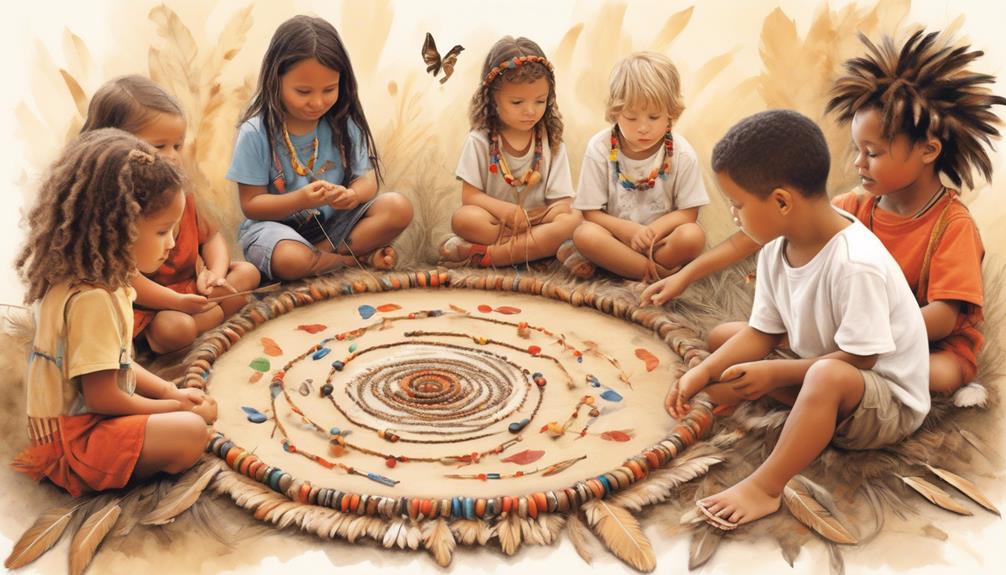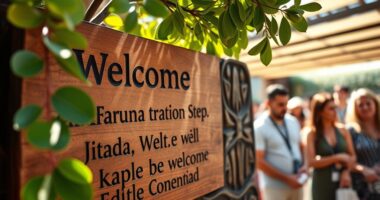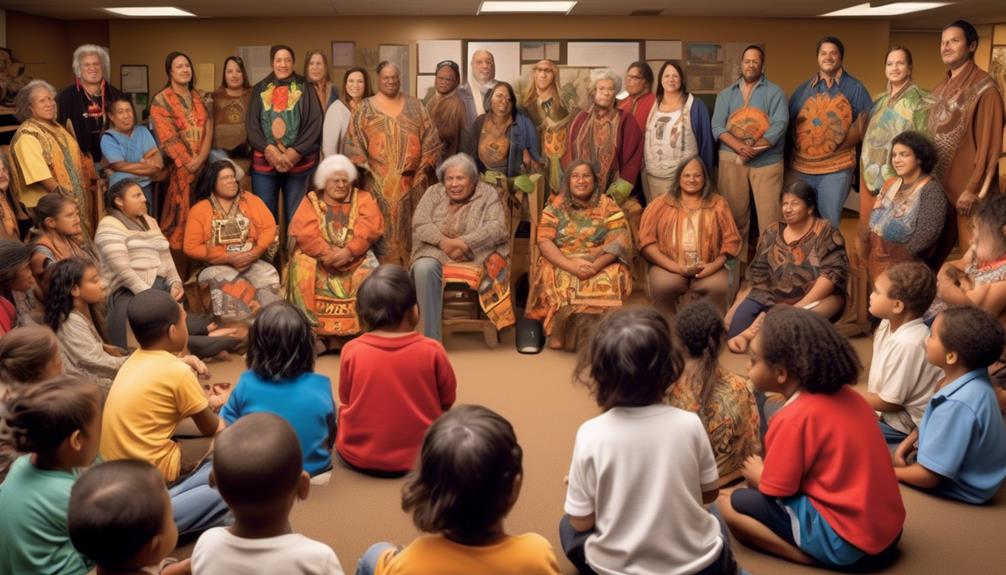In the realm of preserving linguistic heritage and reviving cultural identity, Australia’s innovative language policy stands out as a beacon of hope for the reawakening of Indigenous Australian languages. Despite a tumultuous past and present challenges, the rich linguistic legacies of Indigenous communities have been largely overlooked. Yet, the implementation of new policy frameworks has ushered in a new era of potential.
Through meticulous examination of the current state of Indigenous Australian languages and the impact of innovative language policies, we are compelled to explore the tangible initiatives driving this linguistic revival.
However, the question remains: what are the future prospects for Indigenous language revitalization, and how can these efforts shape the cultural landscape of Australia?
Key Takeaways
- The historical suppression of Indigenous languages in Australia, due to British colonization and government assimilation policies, has led to a significant decline in Indigenous language usage.
- Only 9.5% of Indigenous Australians currently speak their native language at home, making Australia one of the countries with the highest rates of language loss globally.
- Innovative language policies are crucial for revitalizing and preserving Indigenous languages in Australia, and they play a significant role in promoting the cultural heritage and identity of Aboriginal Australians and Indigenous Peoples.
- Collaboration between linguists, educators, Indigenous communities, and governmental institutions is essential for the success of language revitalization efforts, and the integration of Indigenous languages into educational curriculums and support for bilingual education programs are vital steps towards achieving this goal.
Historical Suppression of Indigenous Languages
After British colonization in 1788, Indigenous languages in Australia were systematically suppressed, leading to a significant decline in their usage and fluency. Government policies, aimed at assimilating Aboriginal people into European settler society, actively contributed to the loss of language. For over a century, Indigenous children were forcibly removed from their families and communities, severing their connection to their languages and cultures. Furthermore, authorities punished Indigenous individuals for speaking their native languages, perpetuating the suppression for decades.
This historical suppression of Indigenous languages has had a profound impact, resulting in the endangerment of these vital linguistic heritages. As a result, only 9.5% of Indigenous Australians now speak an Indigenous language at home, highlighting the urgent need for language revitalization efforts.
To address this issue, it's crucial to support Aboriginal communities in reclaiming, preserving, and revitalizing their languages. By acknowledging the historical injustices and working collaboratively with Indigenous communities, we can pave the way for the preservation and revitalization of these endangered languages, ensuring the cultural richness and linguistic diversity of Australia for generations to come.
Current State of Indigenous Australian Languages
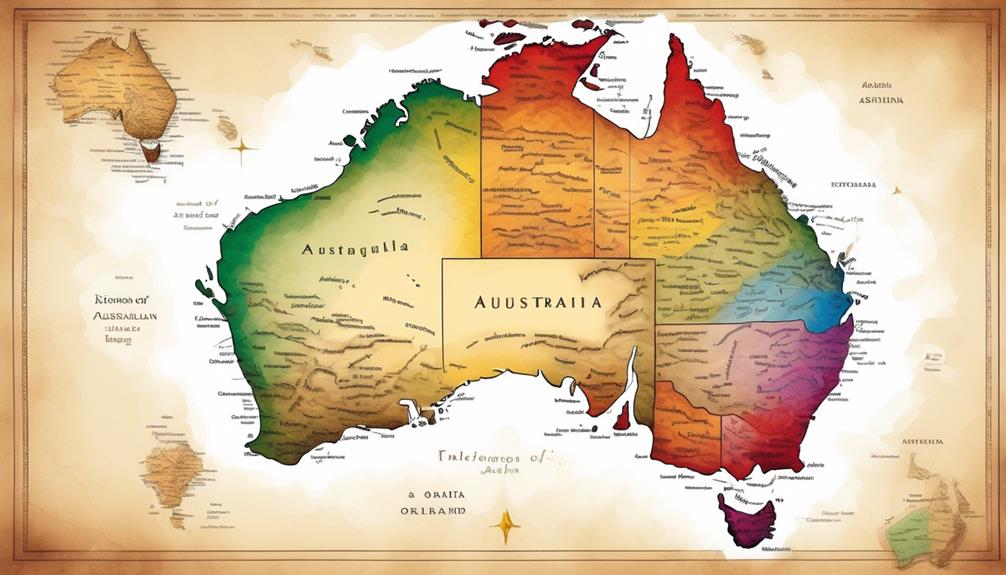
The historical suppression of Indigenous languages in Australia has led to a current state where only 9.5% of Indigenous Australians speak their native language at home, emphasizing the urgent need for language revitalization efforts.
Indigenous languages are crucial for preserving Indigenous cultures and ensuring their cultural heritage. Australia faces one of the highest rates of language loss globally, making the revival of Indigenous languages a pressing issue.
Efforts to revive these languages are gaining support from federal and state governments, with initiatives like the Gumbaynggirr Giingana Freedom School in New South Wales.
The revival of Indigenous languages is closely linked to Indigenous rights and is a central focus of the 'Yes campaign' for constitutional recognition.
Language immersion programs, collaborative partnerships between linguists and Indigenous communities, and the use of technology are being utilized to promote language revitalization.
These efforts not only aim to increase the number of Indigenous languages spoken but also to strengthen the connection between language and culture for First Nations peoples, ultimately contributing to the preservation of Australia's rich linguistic heritage.
Impact of Innovative Language Policies
Innovative language policies play a pivotal role in revitalizing and preserving Indigenous languages in Australia, shaping the landscape of linguistic revitalization efforts. These policies have led to significant outcomes, such as the establishment of the Gumbaynggirr Giingana Freedom School, the first bilingual Indigenous school in New South Wales.
The collaboration between linguists, educators, and Indigenous communities has been essential for the success of Indigenous language programs, fostering intergenerational language transmission and contributing to community well-being.
National legislative frameworks also reflect the impact of innovative language policies, providing support for the preservation and revitalization of Australian languages. As a result, these initiatives are instrumental in promoting the cultural heritage and identity of Aboriginal Australians and Indigenous Peoples.
Initiatives Driving Linguistic Revival
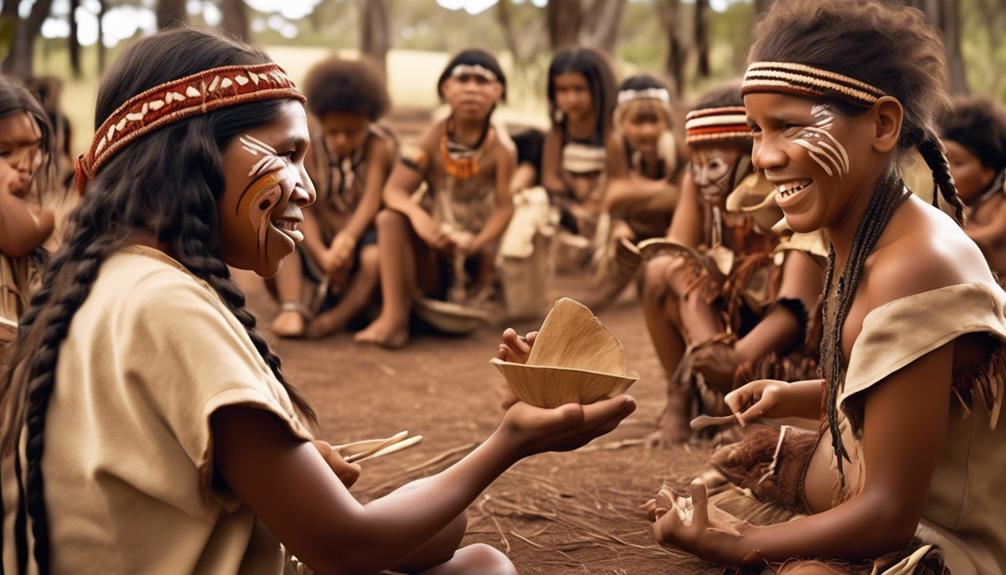
Driven by the collaborative efforts of linguists, educators, and Indigenous communities, initiatives for linguistic revival are playing a crucial role in preserving and revitalizing Indigenous languages in Australia. Indigenous languages aren't only a means of communication but also a fundamental aspect of Indigenous cultures and identities.
The Gumbaynggirr Giingana Freedom School in New South Wales stands as a pioneering example, being the first bilingual Indigenous school in the area. This initiative not only fosters language acquisition but also ensures the intergenerational transfer of cultural knowledge. Moreover, the support from federal and state governments in Australia is further propelling the revival of Indigenous languages, recognizing their significance in the country's cultural tapestry.
Efforts to revive Indigenous languages are deeply intertwined with Indigenous rights, reflecting the broader struggle for recognition and empowerment. The upcoming constitutional recognition referendum is a testament to this, highlighting the inextricable link between language revitalization and Indigenous rights.
Collaboration between linguists, Indigenous communities, and educational institutions is deemed essential for the success of these initiatives, ensuring that the linguistic revival is holistic and community-driven. As we continue to champion the resurgence of Indigenous languages, it's imperative to recognize the critical role they play in preserving the heritage and knowledge of Indigenous Australian Nations and People, including Aboriginal and Torres Strait Islander communities.
Future Prospects for Indigenous Language Revitalization
Collaboration between Indigenous communities, governments, and educational institutions remains essential for the sustained revival of Indigenous languages. As we look to the future, the prospects for Indigenous language revitalization are promising.
New research, documentation, and technological innovations will undoubtedly play a crucial role in this endeavor. Additionally, the integration of Indigenous languages into educational curriculums, particularly in New South Wales, and the support of bilingual education programs are vital for the long-term sustainability of these languages.
Speaking one's language, the mother tongue, is fundamental to preserving cultural identity and passing on traditions to future generations. It's imperative to continue capacity building and providing professional development for Indigenous language teachers to ensure the success of language programs.
Moreover, the recognition of Aboriginal and Torres Strait Islander languages in national legislative frameworks and policies is crucial for the preservation and revitalization of Australian languages. By embracing these prospects and working together, we can pave the way for a future where Indigenous languages thrive as the first languages of Australia.
Frequently Asked Questions
How Are Indigenous Languages Being Revived?
We are reviving indigenous languages through cultural immersion, community involvement, and educational initiatives.
Government support has been crucial, along with linguistic research and the development of digital resources.
Intergenerational transmission and cultural appreciation are also vital to this revival.
Bilingual schools, like the Gumbaynggirr Giingana Freedom School, and reintroducing languages in state schools, such as Dharug in Sydney, showcase our commitment to preserving and celebrating indigenous languages.
Why It Has Been Difficult to Retain Aboriginal Languages in Australia?
It's been difficult to retain Aboriginal languages in Australia due to historical oppression, cultural assimilation, and limited government support.
Educational initiatives, community engagement, and oral traditions play crucial roles in preserving linguistic diversity.
Challenges like lack of fluent speakers and intergenerational transmission require collaboration.
However, technological advancements and increasing government support are aiding language revival efforts.
These efforts are vital for preserving Indigenous languages, which are integral to our cultural heritage.
Why Is Language Preservation Recording and Revival Important for First Nations People and Other Australians?
Preserving and reviving Indigenous languages is crucial for cultural identity, educational benefits, and intergenerational connection.
It's important for linguistic diversity, community empowerment, healing, and reconciliation.
Additionally, it offers economic opportunities and promotes social cohesion.
This effort is significant for First Nations people and all Australians as it safeguards cultural heritage and strengthens the fabric of our society.
What Are Three Ways That Language Can Be Preserved and Revitalized?
Language immersion, community involvement, and technology integration are key to preserving and revitalizing languages.
Immersion programs offer hands-on learning, fostering fluency and cultural exchange.
Community participation ensures language relevance and intergenerational learning.
Technology aids in linguistic documentation and educational programs.
Government support is crucial in sustaining these efforts.
Together, we can preserve and revitalize languages, serving others and honoring diverse cultural legacies.
Conclusion
In conclusion, the innovative language policies in Australia are coinciding with a renewed interest in preserving Indigenous languages.
The impact of these policies is already evident, with increased funding and resources supporting language revitalization initiatives.
As we look to the future, there's hope for the continued revival of Indigenous Australian languages, ensuring the preservation of cultural heritage and the empowerment of Indigenous communities.
The time to support and celebrate linguistic diversity is now.

